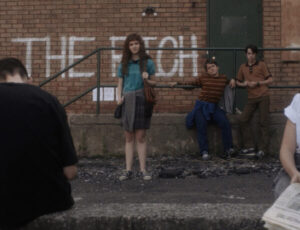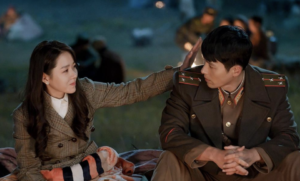Director Hans Petter Moland’s When Bubbles Burst examines not only the mayhem caused by the 2008 global financial crisis but also discusses just how far reaching the chaos was and how the terrible lessons from that have yet to be realized. The small Norwegian town of Vik is dramatically impacted by the financial crisis when an ill-advised investment, with connections to American banks, effectively cripples the once prosperous town. The film follows two members from the Vik community as they venture to the United States, United Kingdom, and throughout Europe on their way back to Norway while searching for answers as to what transpired and lead to the financial catastrophe as we now know it.
Although the film does not break new ground as what shady business dealings caused the crisis, it presents a thorough analysis what economists such as Carlota Perez, Joseph Stiglitz and Michael Hudson refer to as the real economy and the financial economy. The real economy being what is actually going on with finances in relation to goods and services. The financial economy is what is presented to us as the real economy (but is actually almost like an insect that sucks the life out of the real economy and allows for very few to truly prosper).
The film also discusses financial crises of the past from the industrial revolution to the stock market crash of 1929 and highlights the financial golden years post World War II. After the 1929 stock market crash, rules and regulations were put into place in order to prevent the combination of investment and commercial banking. Additional restrictions were placed on other banking activities that could be interpreted as “risky”. By doing so, the American banking system saw years, decades actually, of stability. Unfortunately, during the Regan era, the Republican government thought, hey, this stability is great, but we could definitely make more money if we relaxed these rules a bit. From 1980 onward it was not so much a relaxing or bending of rules but more so the repealing of rules. With each passing year, section after section changed in some way paving the way for the economic breakdown in 2008.
Moland’s film does not pretend that financial debt is unlikely or necessarily “bad”. Of those interviewed on the subject, they assert that it is actually necessary because it paves the way for innovation. Framing the necessity of debt so succinctly helped lessen the anxiety that surfaces every time I see a documentary that discusses this topic. Noted scholar Carlota Perez suggests that every economic cycle has three stages in which we see an upwards climb where things are good, a downward shift where everything goes to hell and an eventual upturn again. However, with the current financial cycle, continuing to make the wrong moves (bailing out banks, refusing to implement restrictions) instead of the right moves (investing in the green industry which would create a better relationship with the real economy) will only stagnate the world’s financial issues, not just America’s.
At the end of the film, the individuals being interviewed are asked whether they think another collapse is imminent. All respond in the affirmative. In a moment of both humour and dread, economist Michael Hudson states that he is an optimist and that while a crisis is not far off, and will most likely be worse than the one 5 years ago, he feels that once it is over, society will finally learn their lesson and move towards creating a more viable and stable economy. Given the economic history presented in When Bubbles Burst, and witnessing the 2008 financial crisis first-hand, I have doubts we will successfully move towards a more practical economic solution any time soon.







